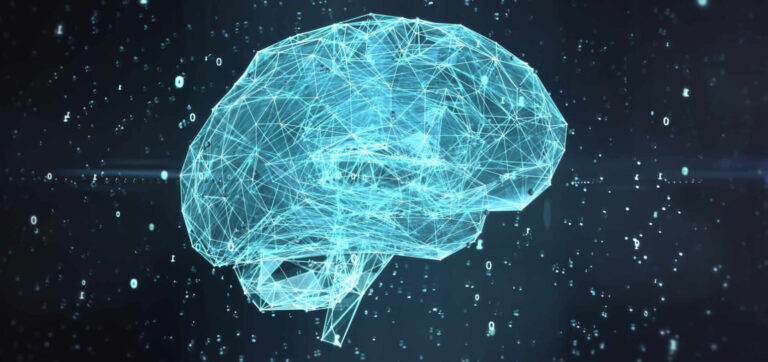Artificial Intelligence and Machine Learning
Machine Learning (ML) seems everywhere these days, along with Artificial Intelligence (AI) and robotics. But ML and AI are not just buzzwords. Machine Learning is a study field in Computer Science that helps us create programs that mimic human-like learning. And this opens up a huge range of possibilities.
Since Machine Learning models are inspired by our own ways of learning, some of the most commonly used Machine Learning models, such as Regression, Classification, Clustering, or Natural Language Processing, work similarly to how a human learns.
In the classical Supervised learning method, training is carried out by presenting positive and negative examples. The model tries to understand the inherent pattern within these examples during the training process. It then applies them to unknown data through inference. Those patterns can be used for applications like classifying the pieces of data you have, figuring out a connection between inputs and outputs, creating some decision sequences, predicting an outcome based on past experience, and many more.
Is Machine Learning just a trend?
Even though “Machine Learning” is popping up everywhere lately, it is not a bubble or a fad technology. Machine Learning goes back more than 60 years, and fields of practical application have increased dramatically during the last couple of decades. Better, more efficient training algorithms together with ever-increasing hardware processing power are driving this trend.
Currently, Machine Learning solutions are most commonly applied to behavior prediction, personalized marketing, fraud detection in the banking industry, chatbots, digitization of physical documents, and self-driving cars.
Self-driving cars are one of the most recent applications in the market. You might have already wondered why it is so challenging to apply automation and Machine Learning to self-driving cars compared to other fields. Two of the most important factors are the necessary processing speed and the precise timing of decisions made by the self-driving car.
Speed is critical because the time spent on automated decisions can make the difference between an accident and smooth driving. Active learning takes even more time and processing power. However, with the recent advances in dedicated hardware systems, we can already see self-driving cars in the market that actively use different Machine Learning frameworks under the hood.
Many of these performance-related challenges are closely related to Computer Vision and Image Classification. And this takes us to another topic – the technology that finally made autonomous driving possible.
Machine Learning Applications & Deep Learning Revolution
Deep Learning is a relatively new approach within Machine Learning. Unlike older methods, Deep Learning uses a concept called Artificial Neural Networks to carry out Machine Learning and deliver high accuracy in tasks such as speech or image recognition.
While language and vision seem intuitive for us humans, they actually require fast, accurate pattern recognition. This has traditionally been difficult for machines – until the Deep Learning revolution.
This is why it took Deep Learning to bring us self-driving cars, improved online translators, fluent conversations with assistant software such as Amazon’s Alexa, and image-based cancer detection.
With its superior accuracy, Deep Learning technology became vital in every area where the goal is to increase machines’ intelligence.
Some applications might seem whimsical: Google AlphaGo is only one example of a Deep Learning application that made the news, doing so when it defeated Lee Sedol, one of the world’s best Go players. Some are more mundane, but enable efficient personalization features. Facebook’s AI lab, for instance, performs tasks such as automatically tagging uploaded pictures with the people’s names by using Machine Learning and Deep Learning technologies.
And finally, Deep Learning has brought us robot apprentices: The Machine Learning framework Deep TAMER, developed by data scientists at the University of Texas (UT) and the U.S. Army Research Laboratory (ARL), can give a robot the ability to learn new tasks through observation. Using Deep TAMER, a robot can learn a task with a human trainer by watching video streams or observing a human perform it. The robot later practiced the task with the help of some coaching from the trainer, who provided verbal feedback such as “good job” and “bad job.”
The Future of Artificial Intelligence
Over the past decade, global startup funding for Artificial Intelligence has grown exponentially, rising from $670 million in 2011 to $36 billion in 2020. This 50-fold increase roughly reflects the acceleration in the development growth in the AI space.
This development is driving significant changes in all socio-economical areas, delivering brand-new concepts in automation just as it creates challenges for the whole of humanity.
Experts and futurists are concerned about the threats and challenges arising from the rapid development in data science and AI. According to them, one of the biggest challenges might be in the privacy and security fields. For example, Machine Learning trends such as ‘deepfakes’ make it difficult to distinguish genuine content from fakes. These challenges will force us to improve our fraud detection abilities continuously.
But the threats and challenges that come with the development of Artificial Intelligence technologies are just one side of the medal. On a brighter note, Artificial Intelligence and Robotics studies could one day help us re-shape our lives entirely – or cure many diseases currently thought incurable.
